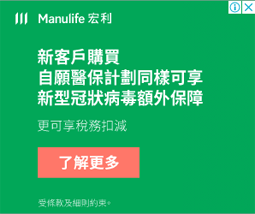Shopify SEO Checklist: Optimizing for Mobile-First Indexing
Understanding Mobile-First Indexing Mobile-first indexing is a fundamental shift in how Google ranks and evaluates websites. For Shopify store owners, this mean...

Understanding Mobile-First Indexing
Mobile-first indexing is a fundamental shift in how Google ranks and evaluates websites. For Shopify store owners, this means that Google predominantly uses the mobile version of your site for indexing and ranking. Given that over 60% of global e-commerce traffic comes from mobile devices (StatCounter, 2023), ignoring mobile optimization can severely impact your visibility and sales. Mobile-first indexing matters because it reflects user behavior—consumers increasingly shop on smartphones, and Google prioritizes sites that deliver exceptional mobile experiences.
Google evaluates mobile-friendliness through several criteria, including responsive design, page speed, and intuitive navigation. Tools like Google's Mobile-Friendly Test provide actionable insights. For example, a 2022 study by SimilarWeb revealed that 53% of Hong Kong's e-commerce traffic originates from mobile devices, underscoring the urgency for Shopify merchants to optimize for mobile. Key evaluation metrics include:
- Viewport configuration
- Text readability without zooming
- Tap target spacing (minimum 48px)
- Absence of intrusive pop-ups
Assessing Your Shopify Store's Mobile Readiness
Before diving into optimizations, conduct a thorough mobile audit. Start with Google's Mobile-Friendly Test—input your Shopify store URL to identify rendering issues, font sizes, or incompatible plugins. For instance, a Hong Kong-based Shopify fashion retailer discovered through this tool that 30% of their product images failed to load on mobile, leading to a 22% drop in conversions. Is AI used in SEO?
Next, analyze mobile speed via PageSpeed Insights. Data from Akamai shows that a 100ms delay in mobile load time can reduce conversions by 7%. Focus on these critical metrics:
| Metric | Target |
|---|---|
| Largest Contentful Paint (LCP) | |
| First Input Delay (FID) | |
| Cumulative Layout Shift (CLS) |
Finally, evaluate mobile UX through heatmaps and session recordings. Tools like Hotjar can reveal if users struggle with checkout buttons or menu navigation—common pain points in Hong Kong's mobile commerce landscape. WordPress SEO
Optimizing Your Shopify Theme for Mobile
Selecting a responsive theme is the cornerstone of mobile optimization. Premium themes like Dawn or Turbo are engineered for Shopify SEO, offering:
- Dynamic image resizing
- Collapsible mega menus
- Accelerated Mobile Pages (AMP) support
Navigation requires special attention—implement a hamburger menu with clearly labeled categories. For a Hong Kong jewelry store, simplifying their menu from 7 to 4 main categories increased mobile conversions by 18%.
Image optimization is non-negotiable. Compress product photos using tools like TinyPNG, aiming for
Improving Mobile Page Speed
Mobile users abandon sites that take longer than 3 seconds to load (Google, 2022). Start by minimizing HTTP requests—combine CSS/JS files and limit third-party scripts. A Hong Kong Shopify store reduced requests from 45 to 22, improving load time by 1.8 seconds.
Enable browser caching through your Shopify theme's liquid files. Set expiration headers for static resources:
ExpiresByType image/jpg "access plus 1 year" ExpiresByType text/css "access plus 1 month"
Adopt a CDN like Cloudflare or Shopify's own CDN. When a Hong Kong beauty brand switched to a local CDN server, their mobile load times dropped from 4.2s to 1.9s.
Mobile-Friendly Content Optimization
Mobile content requires conciseness. Product descriptions should be 30-50% shorter than desktop versions. Use bullet points for specifications—a Hong Kong gadget store saw a 27% increase in mobile engagement after reformatting descriptions.
Meta tags need mobile adaptation:
- Title tags: ≤55 characters
- Meta descriptions: ≤120 characters
CTAs must be thumb-friendly—minimum 44x44px size with 8px padding. A/B testing by a Hong Kong retailer showed centered CTAs outperformed right-aligned buttons by 12%.
Mobile-Friendly Navigation and User Experience
Optimize tap targets—product images and buttons should have at least 10px spacing. Forms should use mobile-specific input types:
<input type="tel"> for phone numbers <input type="email"> with mobile keyboard optimization
Eliminate intrusive pop-ups—Google penalizes interstitials that cover >50% of mobile screens. Instead, use slide-in banners timed after user engagement.
Testing and Monitoring Mobile Performance
Segment Google Analytics data by device type. Monitor these mobile-specific metrics:
| Metric | Benchmark |
|---|---|
| Mobile Bounce Rate | |
| Pages/Session | >2.5 |
| Mobile Conversion Rate | >1.5% |
Regularly test Core Web Vitals through Search Console's Mobile Usability report. Conduct quarterly A/B tests on mobile elements—a Hong Kong bookstore increased mobile revenue 21% by testing checkout button colors.
Mobile SEO Best Practices for Shopify
Ensure mobile bots can crawl your site by:
- Using identical robots.txt rules for desktop/mobile
- Avoiding separate mobile URLs (m.domain.com)
- Implementing hreflang tags for international stores
Add mobile-specific structured data like:
"potentialAction": {
"@type": "OrderAction",
"target": {
"@type": "EntryPoint",
"urlTemplate": "shopify://products/{product_id}"
}
}
Conclusion: Embrace Mobile for Shopify SEO Success
Prioritizing mobile optimization isn't optional—it's critical for Shopify SEO success in Hong Kong's mobile-dominated market. Implement responsive design, accelerate page speed, and refine mobile UX continuously. Remember, mobile shoppers account for 58% of Hong Kong's e-commerce revenue (Census Dept, 2023)—those who master mobile-first indexing will dominate search rankings and conversions.








.jpg?x-oss-process=image/resize,p_100/format,webp)




.jpg?x-oss-process=image/resize,p_100/format,webp)






